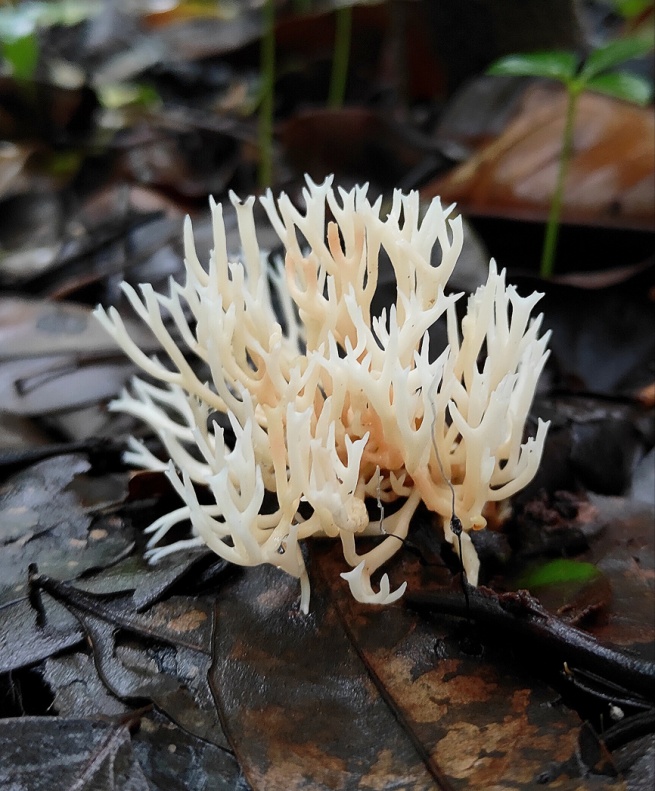Fruiting body small to medium. Basidiomata 5−9 cm high, solitary to gregarious, white to cream, branched three to four times at the apex; polychotomous below, becoming narrow and dichotomous above, stipe cylindric; apices acute; stipe 1−3 × 0.4−1 cm, distinct, whitish to cream, shortly villose-tomentose. Odor pleasant. Basidiospores 3.8−5.0 × 3.2−4.1 µm, subglobose to ellipsoid, hyaline, spiny, uniguttulate, dextrinoid; Basidia 26−42 × 3.8−8.2 µm, clavate, with 2 sterigmata. Cystidia not observed.
Specimens examined
India, Maharashtra, Kolhapur, Padsali (16°41ʹ30ʺN-73°50ʹ33ʺE), amongst decaying leaf litter, solitary, scattered, 24.06.2021, Bornak, S. I. and Patil, Y.S. (Y21V3C6).
Remarks
Description of this species matches with the description of Furtado, et al., (2016). R. kunzei has distinct morphological variation in shape, size, color and basidiospore dimensions. The stipe is always villous or tomentose and the dried basidioma darkens in potash. Thind in 1961 reported and described similar 22 specimens with two-spored basidia and clampless hyphae from Mussoorie, India. (Furtado, et al., 2016). This species has a wide distribution. In India this species has been previously reported from Chikhaldara, Maharashtra. (Verma and Pandro, 2018). This is the new report from study area.
References:
Furtado, A.N., Daniels, P.P. and Neves, M.A. (2016). New species and new records of Clavariaceae (Agaricales) from Brazil. Phytotaxa. 253(1):1-26. DOI: 10.11646/phytotaxa.253.1.1
Thind, K.S. (1961). The Clavariaceae of India. Indian Council of Agricultural Research, New Delhi, 197 pp
Verma, R.K. and Pandro, V. (2018). Diversity and Distribution of Clavarioid Fungi in India, Three Fungi from Central India. Int.J.Curr.Microbiol.App.Sci 7(12): 2129-2147





